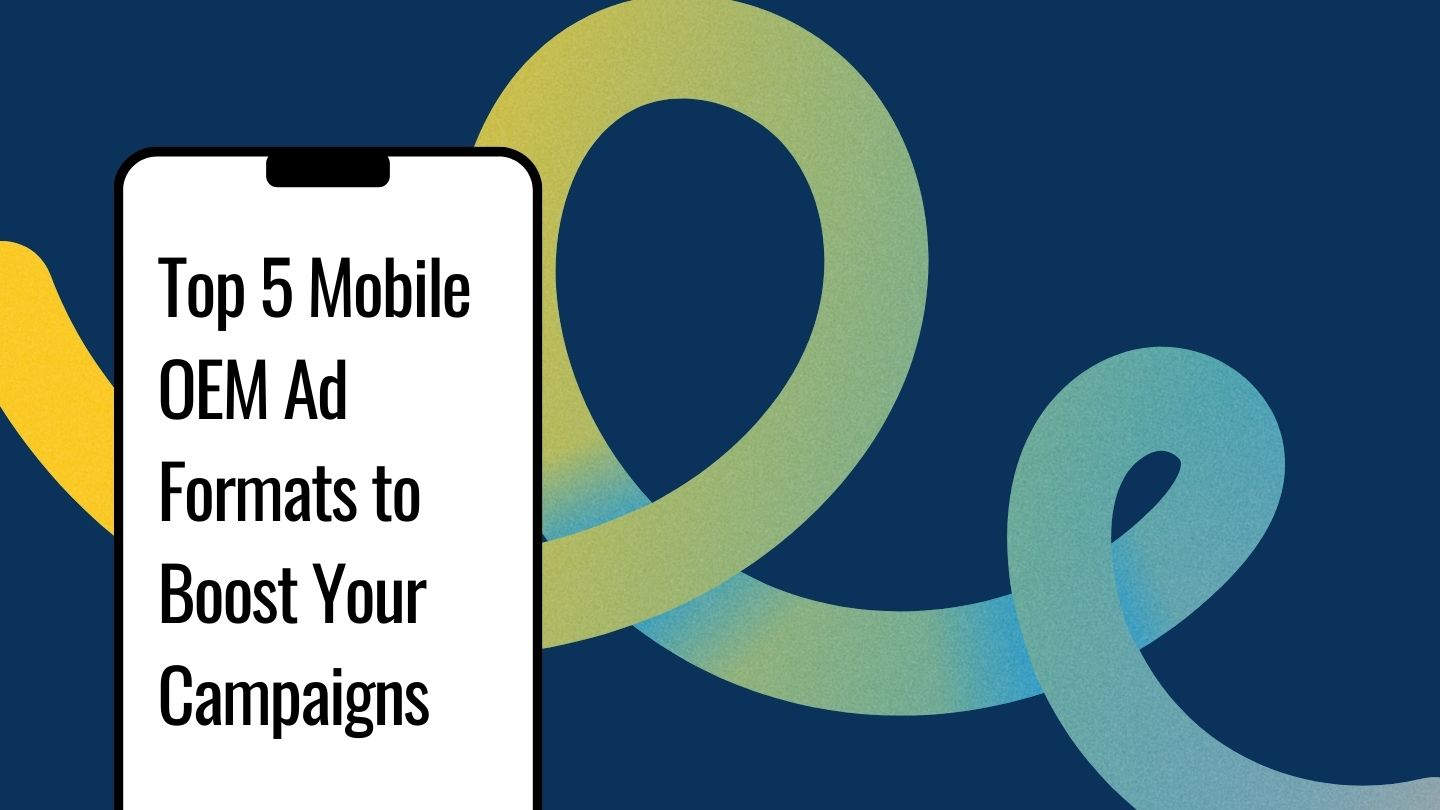There is an undue advantage to companies that use Mobile Original Equipment Manufacturer (OEM) advertising. But why should businesses rely on Mobile OEM ad formats to get ahead in the race?
To better understand this, we need to know what’s happening in the backdrop. Mobile advertising spending is estimated to have reached $327.1 billion in 2022 and is now projected to rise to nearly $399.6 billion by the end of 2024. That would approximately be a 22.16% increase in the total mobile ad spend.
It is crucial to understand that with each passing year, the competition among the brands is only becoming fiercer, making it harder for them to reach their customers effectively. In today’s mobile-centric world, smartphones have emerged as vital touchpoints for audiences. They provide brands with a dependable and influential platform for interaction. Mobile OEM advertising helps brands to reach their desired target audience efficiently.
What is Mobile OEM?
OEM is the acronym for Original Equipment Manufacturer. In the world of mobile apps, OEMs are platforms for advertising developed by device manufacturers, retailers, and mobile carriers. OEM advertising, in essence, refers to on-device display advertising where the user is presented with an installed app for their phone or receives an on-device suggestion for an app.
Here is a quick list of five of the top Mobile OEM ad formats that marketers leverage to boost their return on investments.

Photo by Paul Hanaoka on Unsplash
Pre-installed Apps
Pre-installed apps are pre-loaded apps installed on new mobile devices by their original equipment manufacturer (OEM). They provide brands with immediate visibility and engagement as users explore their devices for the first time. Install rates tend to be high because these pre-loaded applications cannot easily be ignored or deleted by users. For marketers, this ad format provides both reach and engagement at the same time. This ad form can be a powerful addition to mobile advertising arsenals.
Push notifications
Push notifications are direct messages sent to the user’s devices. They typically appear either on the home page or the notification center. Since they have an immediate and eye-catching nature, they are highly effective in engaging users and holding user attention. Push notifications provide timely updates, promotions, reminders, or important news directly into users’ inboxes.
This advertising format prompts immediate action by the users, or at times, they can also compel them to act fast when needed. The personalized nature and ability to reach users at any time make push notifications an indispensable tool in increasing retention and engagement, as they can also be tailored according to individual users’ preferences for enhanced relevance and effectiveness!

Photo by bruce mars on Unsplash
In-app Advertising
In-app advertising refers to placing advertisements within third-party apps in order to reach an intended target audience. This form of ad can include banners, video ads, or interactive ad formats that appear during app usage. It can range from banners and video ads to interactive ones that occur during usage. As a result, in-app ads are highly engaging.
In contrast, they are often more effective than mobile web ads due to being integrated seamlessly into user experiences within apps. Since users spend a significant amount of time within apps, this ad format offers brands ample time to capture attention. Their targeting capabilities also allow precise targeting based on information such as user data usage patterns or preferences. In a nutshell, in-app advertising can significantly boost your conversion rates!
Splash Screens
Splash screens are full-screen ads displayed when an app is opened. This ad format offers maximum impact and guaranteed visibility. Typically visible only briefly while loading content, splash screen ads offer high brand recall by being seen while the user waits.
They take advantage of users being focused on the screen when the message suddenly appears. Splash screen ads are, therefore, a powerful tool for marketers who want to run high-profile campaigns, product launches, or events where companies desire their messages to be seen immediately by users. On top of it, these ads can engage them visually with graphics, animations, or videos designed specifically to drive user interest or engagement right from the beginning.

Photo by Sara Kurfeß on Unsplash
Native Ads
Native ads are seamlessly integrated into an app’s content, designed to match its visual style. This non-intrusive format offers users a pleasant user experience while advertising branded messages. Native ads may appear as sponsored articles, in-feed ads, or recommended content and seamlessly blend in with its interface.
They have greater user acceptance than other traditional ad formats. Native ads’ subtlety and relevance often yield higher user engagement compared to their counterparts. With this Mobile OEM ad format, advertisers have the power to deliver captivating advertisements that resonate with user interests, thereby improving brand interactions and resulting in conversion opportunities, making native ads an invaluable option for marketers!
In conclusion
Marketers aiming to differentiate themselves from the competition are increasingly turning to Mobile OEM ad formats, known for delivering exceptional results. By embracing these innovative advertising approaches, they are able to elevate their visibility and engagement significantly. This strategy has become a keystone for those seeking to capture the attention of audiences in a crowded digital landscape.
Want to learn more about various Mobile OEM advertising formats in detail? Download our comprehensive guide about Mobile OEM ad formats now!
About the Author







